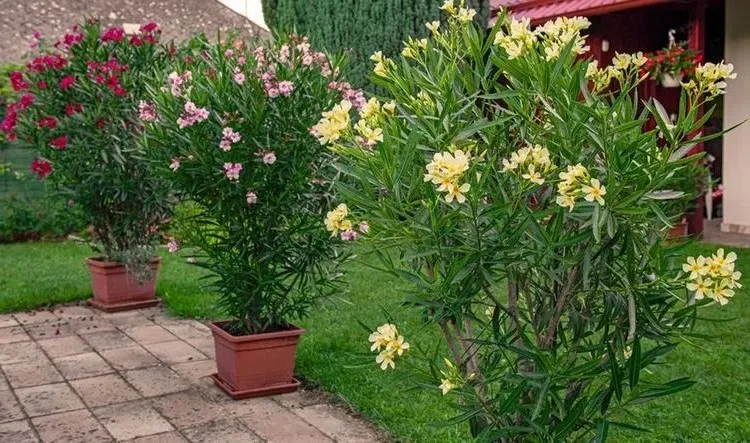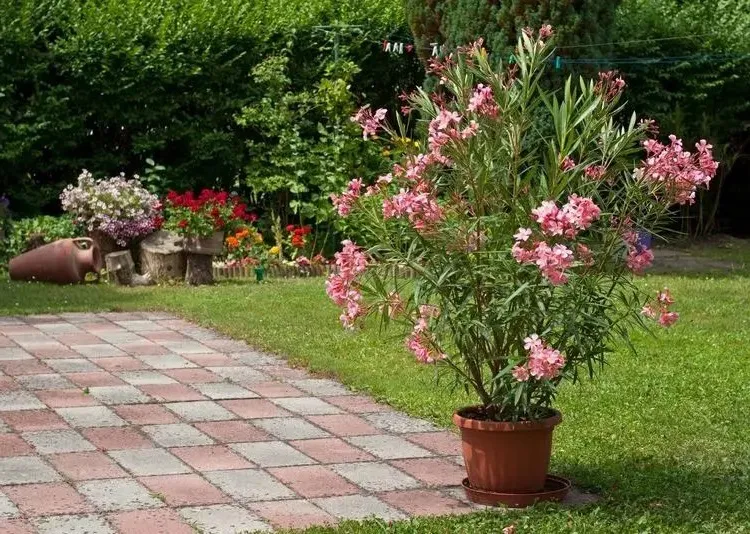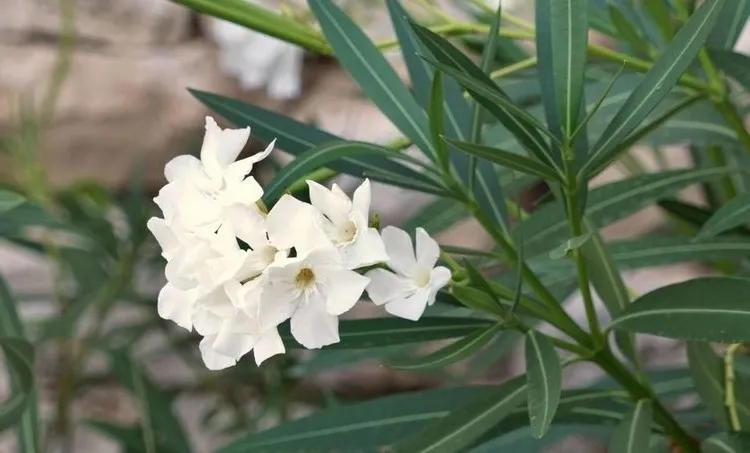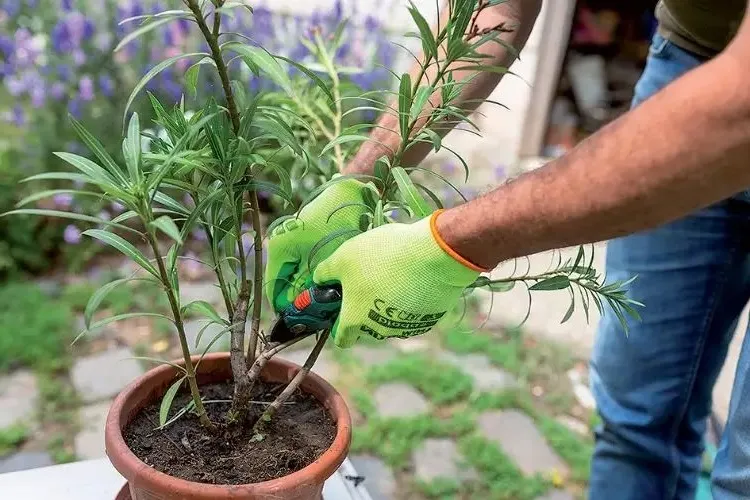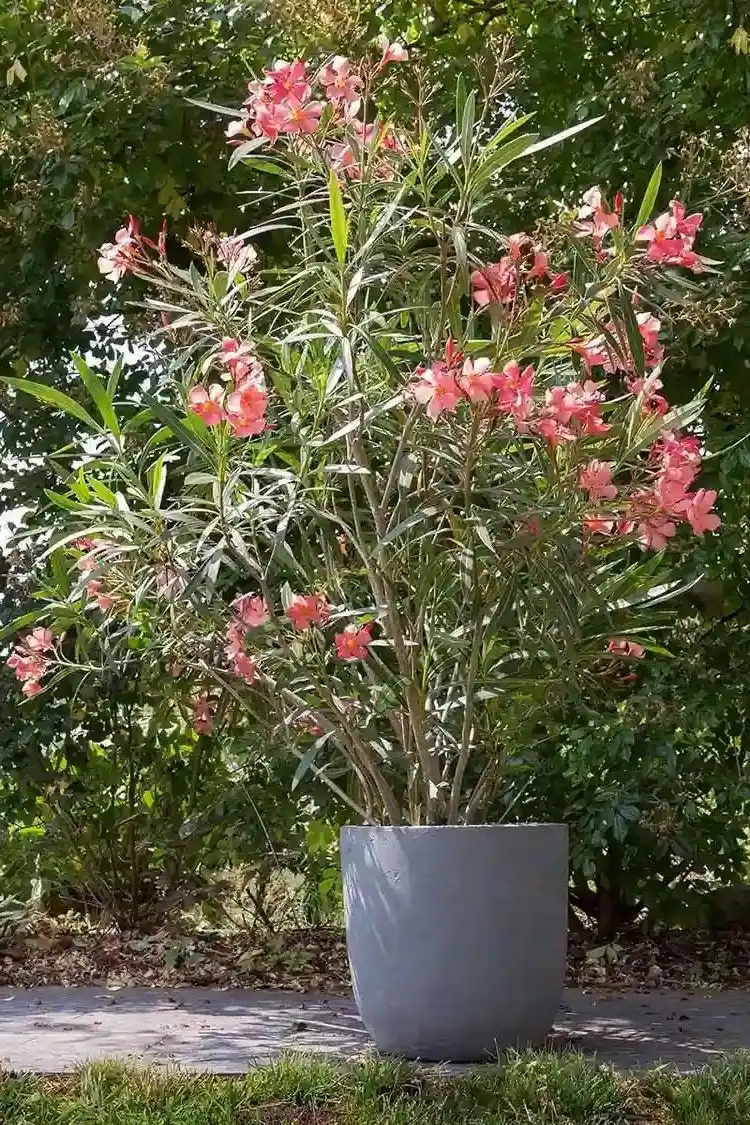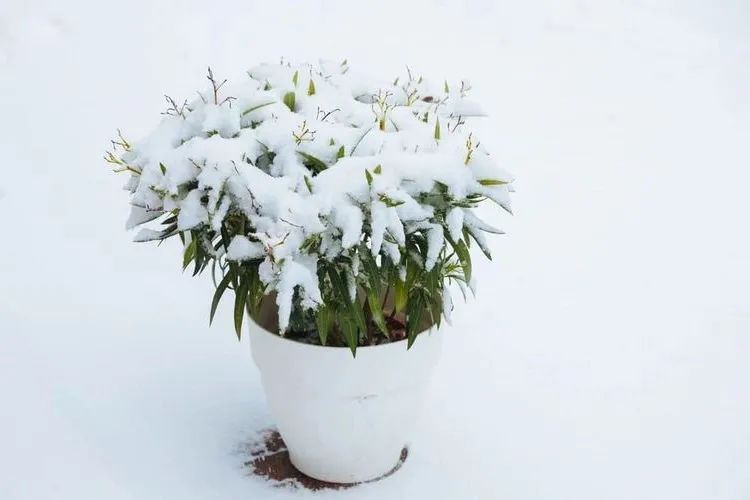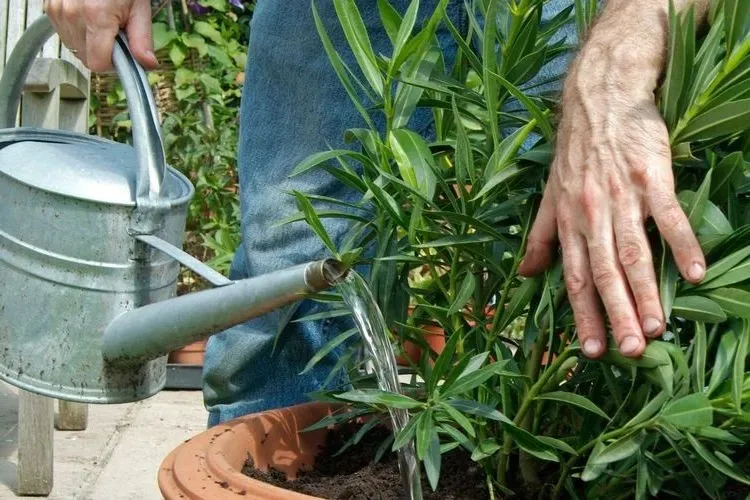Oleander plants do not require regular trimming to remain healthy, although this will help keep the bush in check and limit its spread. When and how to prune oleander after flowering? This is a very important question for many beginner and expert gardeners alike.
Oleander is a common sight in Mediterranean gardens, used as a privacy hedge, covering steep slopes and lining streets. Large, open clusters of flowers bloom all summer long and their numerous shades of white, pink, red, and peach are just the beginning. The erect stems are covered with evergreen, narrow, silvery-green leaves that are very pretty. Discover the following helpful tips and advice for proper oleander care in fall and winter!
Caring for Oleanders Properly in the Fall
Oleanders (Nerium oleander) are best grown in containers in a covered location such as a greenhouse, patio, or conservatory. These plants can be planted indoors in a large pot with soil and compost in a bright, draft-free spot away from central heating.
Pruning is no problem for oleanders, and a well-cared-for plant will recover quickly by showing new, vigorous growth. But before you reach for the secateurs, you should think about the needs of this plant. If an oleander is not pruned, its branches will become bare, with only a few leaves and flower buds at the tips. However, it would be a pity to waste the clipped buds if you prune them for this purpose. All flower buds that survive the winter open in summer. Next year, a heavily pruned plant will have few or no buds.
Avoid this Mistake: Oleander can survive a hard pruning in a sheltered spot. But be warned: It usually takes a couple of years before it blooms profusely after a hard cut.
Also read: Do You Need to Cut Oleander Flowers and Seed Pods: What Summer Care is Required?
When and How to Prune Oleander After Flowering?
Note the following: Ingesting even a tiny amount of any part of the oleander plant can be fatal, so avoid planting in areas frequented by children and dogs. Parts of this plant can irritate the skin. It is recommended to wear gloves when pruning and to wash your hands thoroughly afterwards.
Due to its limited flowering time, the oleander will benefit most if pruned shortly after flowering. Get to work as soon as flowering is over, but before the first frost. Fall-flowering species should definitely be cut by mid-September. With the right equipment, pruning oleander plants is a breeze. Oleanders are easily pruned with hand tools such as secateurs. Make sure all your tools are well maintained and sharpened. Wipe dirt and grime off your devices with a clean rag, then soak them in a solution of bleach and water for 5–10 minutes. This slows down the transmission of pathogens.
Also read: Which Trees Should Not Be Pruned in October?
Methods for How to Prune Oleander After Flowering
It’s not difficult to prune an oleander, but you do need to set a schedule in advance. First think about how you want to prune the oleander. As you do this, keep in mind the final shape you want to achieve and the approximate amount of waste you need to remove. Before you begin your annual pruning of oleander plants, you should check for any damaged or dead branches. When pruning mature plants, no more than 30 percent of the old shoots should be cut away. The remaining branches are cut back to the first bud. This stimulates new growth.
The oleander should also be inspected for pests and diseases, and any diseased or dead parts should be promptly removed.
Overwintering Oleanders – the Right Temperature
The plants should overwinter in a cool, light location. Temperatures of just over 5 degrees Celsius are ideal for the common pink and white varieties. A plant can generally tolerate a few degrees of frost if the root ball is dry, but the leaves tend to turn brown and drop prematurely. The dark red and yellow varieties, which are more sensitive, need a slightly warmer overwintering temperature of around 10 degrees Celsius. In any case, make sure that it does not get warmer than 16 degrees Celsius. Overwintering too warm can lead to (very) long, slender shoots forming in spring.
Fertilizing & Watering the Oleander Plant in Fall & Winter
In winter, you only need to water a little, and you don’t need to fertilize at all. Early September is the last opportunity to apply fertilizer. Oleander can survive the winter without additional fertilizer. While fertilizer can encourage growth, new growth is often damaged by cold weather. When it comes to watering, less is more: the plant should be watered infrequently but thoroughly. The soil should never become too dry, as the exotic plant needs a moist environment.
Pruning and overwintering are two components of oleander care in the fall and winter months. You should start planning the winter quarters for the exotic species as early as mid-September.
Curious which red flowering shrubs you can plant in fall? Here are the top 3 choices!

